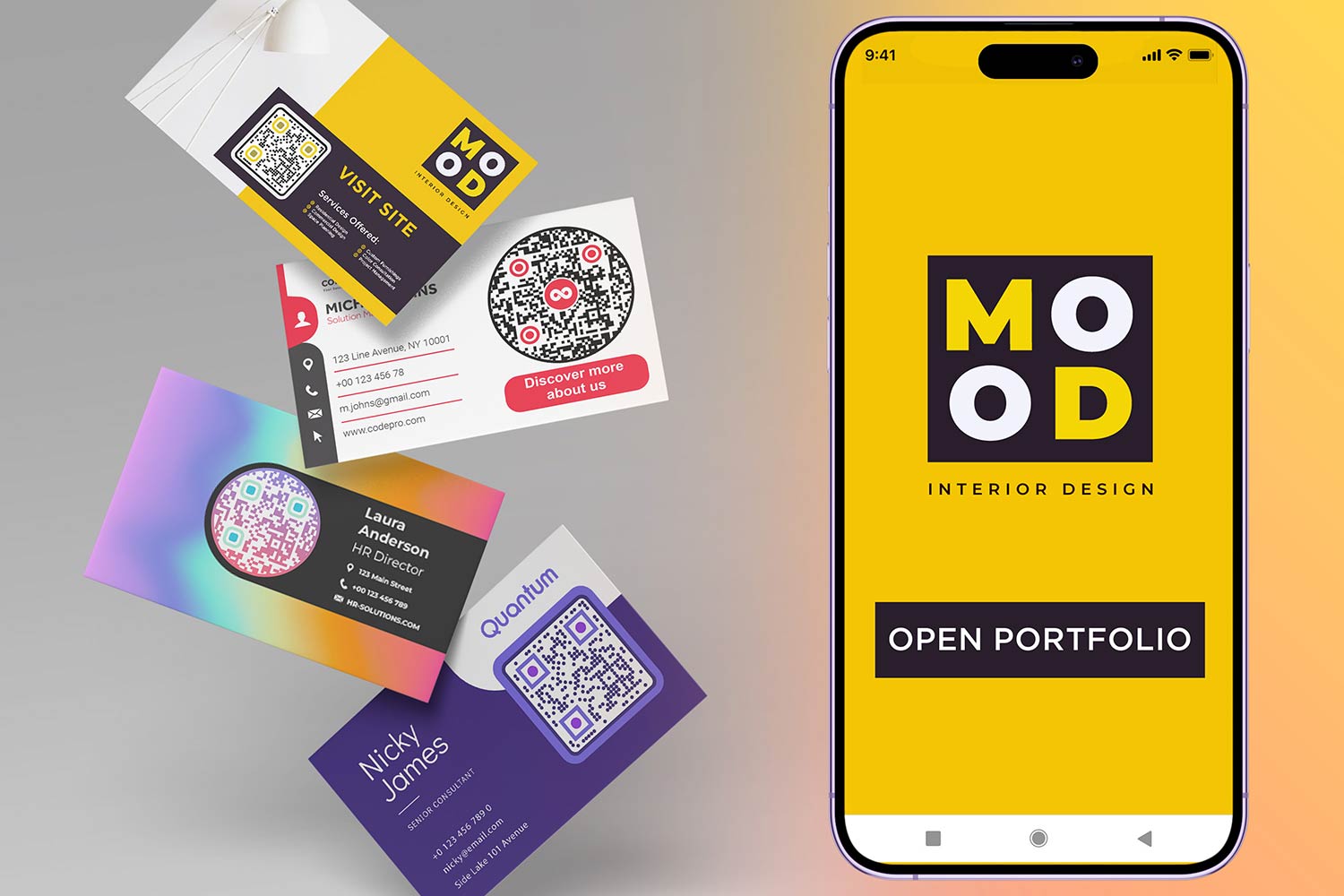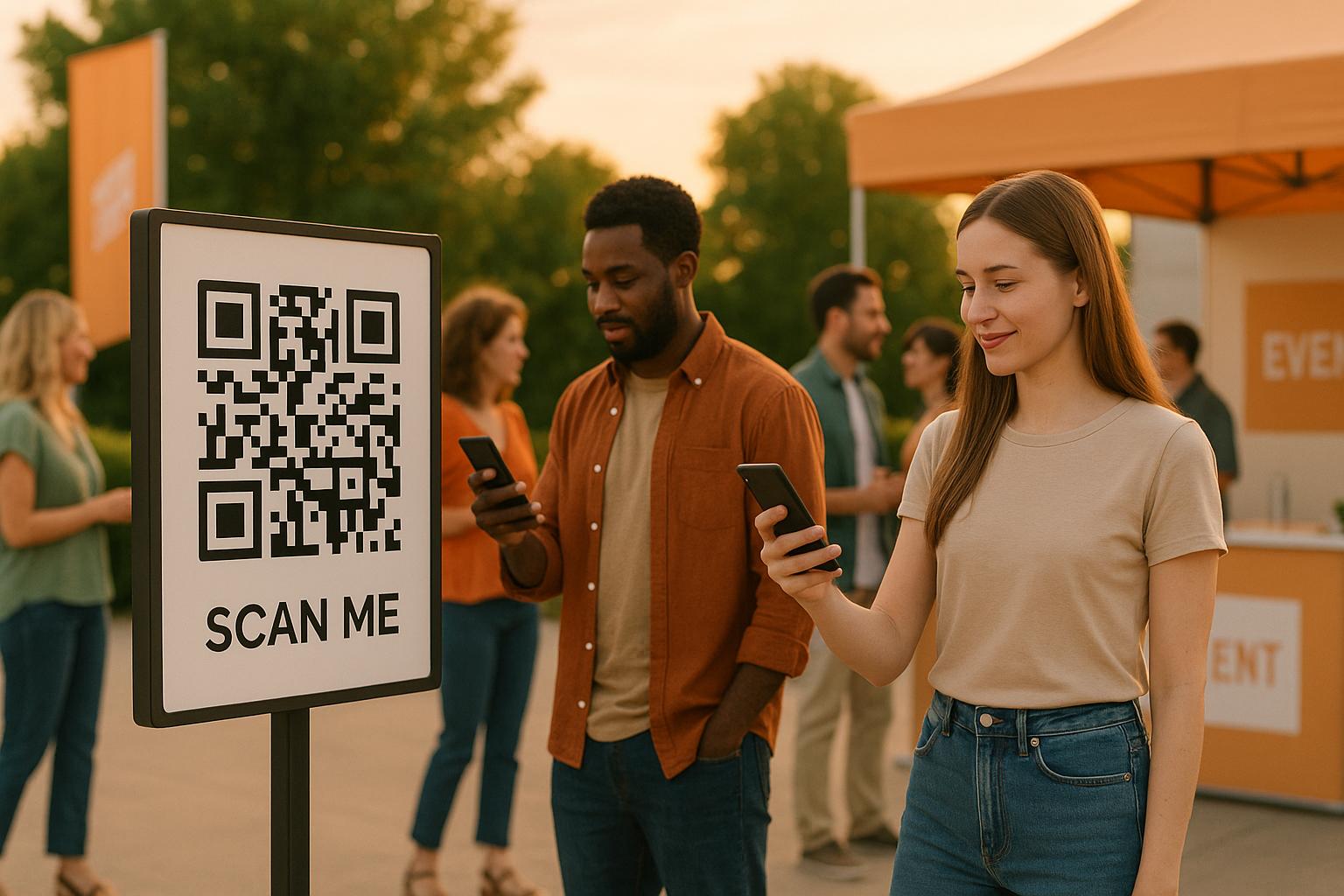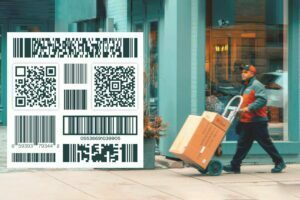AR QR codes are reshaping museum visits by turning static displays into interactive, digital experiences. Here’s what they offer:
- Interactive Content: Scan QR codes to unlock animations, 3D models, and audio guides.
- Personalized Experiences: Access multilingual content, quizzes, and AR games.
- Enhanced Accessibility: Virtual tours and detailed digital guides make exhibits inclusive for all.
- Preservation and Education: Engage with fragile artifacts digitally, preserving them for future generations.
With over 2 billion AR-enabled smartphones, museums can connect with nearly every visitor, creating immersive storytelling opportunities that blend physical and digital worlds seamlessly.
AR Sign Language Museum Guide
How AR QR Codes Improve Museum Storytelling
AR QR codes seamlessly blend physical exhibits with digital content, turning static displays into dynamic, interactive experiences. By layering digital information onto physical artifacts, museums can create immersive storytelling opportunities that were once unimaginable.
What makes AR QR codes so impactful is their ease of use. With over 2 billion smartphones now supporting AR Code technology, museums can connect with nearly every visitor without requiring specialized gadgets or apps. Modern smartphones can scan QR codes instantly, making this technology accessible to the 850 million annual museum visitors in the U.S.. These interactive features allow exhibits to go beyond simply displaying artifacts – they can now tell the complete stories behind them.
Bringing Exhibits to Life with Digital Overlays
AR QR codes can add animations, sounds, and visuals to exhibits, transforming them into "living" displays. When visitors scan a QR code and point their phones at an artifact, they might see 3D models, animations, or reconstructions that breathe life into historical objects.
A standout example is the Smithsonian National Museum of Natural History’s "Skin and Bones" exhibition. Here, AR technology enriches skeletal displays by overlaying digital visuals that show how the animals appeared and moved when alive. Visitors can view muscle structures, skin, and even movement patterns superimposed on static bones, offering a vivid glimpse into prehistoric life.
Museums can also use QR codes to trigger unique experiences. For instance, the My Little Pony Magical Gallery at the National Gallery used QR codes to activate AR portraits, allowing visitors to interact with animated characters stepping out of traditional paintings. This approach not only captivates younger audiences but also adds an interactive layer to the art without altering its integrity.
These digital overlays can go beyond visuals, offering behind-the-scenes content like curator interviews, conservation processes, or detailed close-ups of artifacts. They can even recreate historical settings, showing how artifacts looked in their original environments or when they were newly created.
Creating Virtual Tours and 3D Reconstructions
AR QR codes are also a gateway to virtual tours and 3D reconstructions that expand beyond the museum’s physical space. These codes can link to immersive experiences, such as 360-degree videos or guided virtual tours, providing access to areas typically off-limits to the public.
At the National Museum of Scotland, the Galloway Hoard Exhibition uses QR codes to offer in-depth content, including videos, images, and interactive 3D models of artifacts. Visitors can also access a detailed digital guide with high-resolution images and descriptions to explore at their leisure.
This technology unlocks behind-the-scenes access to places like conservation labs and storage rooms. For example, the Currier Museum of Art’s "Typewriter Revolution" exhibition used QR codes to provide information about each typewriter’s make, model, and features. Visitors could even try a virtual typing simulation to experience how the machines worked.
At Abbotsford, the historic home of Sir Walter Scott, QR codes trigger audio tours that narrate stories about Scott and the historical elements of his residence. These audio guides are available in multiple languages, making the experience accessible to international visitors. Moreover, AR QR codes allow museums to digitally preserve temporary exhibitions, ensuring cultural treasures remain accessible in 3D and AR formats for future audiences.
Benefits for Education and Accessibility
AR QR codes do more than enhance visuals – they reshape how museums educate and include diverse audiences. They cater particularly well to tech-savvy younger visitors while also providing features that improve accessibility for those with disabilities.
Museums can present content in short, engaging formats suited to different learning styles and attention spans. Research shows that when exhibits start with several paragraphs of text, most visitors only read the shortest section. AR QR codes address this by offering interactive, bite-sized content that’s easier to engage with.
"The best use of digital is not to make you aware of the technology, but to make you aware of the art." – Jane Alexander, Chief Information Officer at the Cleveland Museum of Art
AI-powered AR QR codes can even analyze visitor behavior in real time, delivering personalized content based on individual interests and preferences. Museums can also use QR codes for interactive activities like games, quizzes, or scavenger hunts, making visits more engaging for children.
Accessibility is another key advantage. AR QR codes can support multiple languages and inclusive designs. For example, the Prado Museum in Madrid offers 360-degree immersive experiences that bring visitors closer to artworks and artifacts, helping those with mobility challenges or visual impairments enjoy exhibits in new ways.
Additionally, AR QR codes help preserve fragile artifacts by enabling virtual interactions. Visitors can examine delicate historical documents, textiles, or ancient items in high-resolution digital formats without risking damage to the originals.
"Thoughtful curation and user-friendly design are essential to ensure visitors actually engage with QR-linked content." – Sarah-Jane Harknett, University of Cambridge Museums
For successful implementation, museums must ensure QR codes are clearly labeled and easy to locate, with simple instructions for use. They should also provide alternative access options for visitors without smartphones or those hesitant to use QR technology.
Case Study: Implementing AR QR Codes in Museum Exhibits
 Turning Static Displays into Interactive Experiences
Turning Static Displays into Interactive Experiences
Meow Wolf‘s Convergence Station in Denver is a great example of how museums are transforming static displays into engaging, interactive experiences. One standout feature is the Exo-Terrarium, an art installation built around multiple QR codes. Visitors can scan these codes to access a variety of multimedia content, diving into themes like spirituality, genetic engineering, and alchemy.
This approach shows how QR codes can seamlessly integrate into exhibits, becoming part of the storytelling itself. By blending digital and physical elements, museums can create richer narratives that captivate visitors.
The Whitney Museum of American Art took a slightly different route in 2019 with a web-based guide accessible via QR codes placed throughout its galleries. This initiative aimed to improve accessibility and enhance the overall visitor experience.
The process often starts with identifying artifacts that have compelling stories to tell. Museums then generate QR codes that link to content like 3D models, animations, or audio guides. Placement is key – codes need to be visible but not intrusive, ensuring they complement rather than overshadow the exhibits. This thoughtful integration broadens the storytelling potential of museum displays, offering visitors a deeper connection to the artifacts.
For example, the National Museum of Scotland incorporated QR codes into their Typewriter Revolution exhibit in a clever way. The codes were designed to resemble typewriter keys, tying into the exhibit’s theme. Scanning them gave visitors access to videos showing the typewriters in action.
Gauging Impact and Visitor Engagement
Creating interactive exhibits is only part of the equation; understanding how visitors engage with them is just as important. Museums using AR QR codes can track key metrics like scan rates and how long visitors interact with the linked content. Digital surveys provide real-time feedback, while analyzing which exhibits get the most scans helps museums fine-tune their future offerings.
"Thoughtful curation and user-friendly design are essential to ensure visitors actually engage with QR-linked content." – Sarah-Jane Harknett, University of Cambridge Museums
These insights go beyond simple usage stats. QR code data can reveal peak visiting times, popular content types, and visitor movement patterns within the museum. This information helps institutions plan better exhibits and improve overall visitor services.
For museums considering similar systems, tracking these metrics is key to demonstrating the value of the investment. Benefits like increased time spent at exhibits, higher satisfaction scores, and better educational outcomes can all be measured. These results not only justify the cost but also guide future digital projects.
QR code systems also offer multilingual options, expanding accessibility to diverse audiences. Museums can monitor which languages are most frequently used and adjust their content accordingly, ensuring they meet the needs of all visitors. This data-driven approach highlights the broader social benefits of integrating AR QR codes into museum experiences.
sbb-itb-74874c9
Benefits and Challenges of AR QR Code Adoption
Key Benefits of Using AR QR Codes
Museums that integrate AR QR codes into their exhibits unlock a range of benefits that can transform the visitor experience. With approximately 2 billion smartphones supporting AR Code technology, museums can engage a vast audience without requiring visitors to carry additional devices or equipment.
"AR Code technology enhances the museum visitor experience by providing interactive 3D animations, virtual exhibit exploration, and AI assistance to learn more about displayed artifacts. Visitors can engage with artwork as if physically present, even from home." – AR Code
One standout feature of AR QR codes is their ability to provide multilingual content with a single scan. This eliminates the need for separate printed materials in different languages, making exhibits more inclusive and accessible.
Museums can also leverage the dynamic nature of AR QR codes to update content instantly. Whether it’s adding details about a new exhibition, highlighting seasonal themes, or offering fresh insights, these updates don’t require reprinting materials, which not only saves costs but also reduces paper waste. This environmentally friendly approach minimizes reliance on brochures, maps, and multilingual guides.
Real-time analytics is another game-changer. By tracking visitor interactions, museums can identify popular exhibits, understand peak visitation times, and use these insights to plan future exhibitions and allocate resources effectively. A survey of 103 museum visitors revealed that 91% found mobile technology an exciting way to access information, 87% said it enhanced their visit, and 85% would recommend the experience to others.
Although these benefits significantly enhance visitor engagement, museums must address several challenges to fully harness the potential of AR QR codes.
Common Challenges and Best Practices
Adopting AR QR codes comes with hurdles, including high development costs and a steep learning curve for both staff and visitors. Security concerns also arise, as QR codes can be tampered with or duplicated, potentially leading users to harmful content.
The digital divide presents another obstacle. Not all visitors own smartphones or feel comfortable using QR technology, requiring museums to provide alternative ways to access the same information.
"Thoughtful curation and user-friendly design are essential to ensure visitors actually engage with QR-linked content." – Sarah-Jane Harknett, University of Cambridge Museums
Another challenge is ongoing content maintenance. Museums must ensure their QR codes remain functional and direct visitors to up-to-date resources. Broken links or outdated content can frustrate users and harm the institution’s reputation.
To address these challenges, museums can adopt practical strategies. For example, strategically placing QR codes ensures they are easy to find, clearly labeled, and paired with simple instructions. These designs should integrate seamlessly with the exhibits and not detract from the overall experience.
Training staff is equally important. Front-line personnel should be equipped to guide visitors through QR-enabled experiences, which requires collaboration across different departments to ensure smooth implementation.
Dynamic QR codes offer a flexible solution to many of these issues. They allow museums to update content without generating new codes, track visitor interactions, and even deliver personalized content. This adaptability is especially beneficial for institutions that frequently update their exhibits.
Combining QR technology with traditional methods can also enhance accessibility and security. For instance, museums might offer both audio guides and QR-enabled AR experiences, catering to a broader range of visitor preferences. Regular performance monitoring, including scan rates, engagement duration, and visitor feedback, helps museums measure the impact of their investments and demonstrate value to stakeholders.
These approaches lay the groundwork for museums to effectively adopt advanced AR QR tools, ensuring seamless updates and insightful analytics for a more engaging visitor experience.
How Pageloot Supports Museums with Advanced QR Code Tools
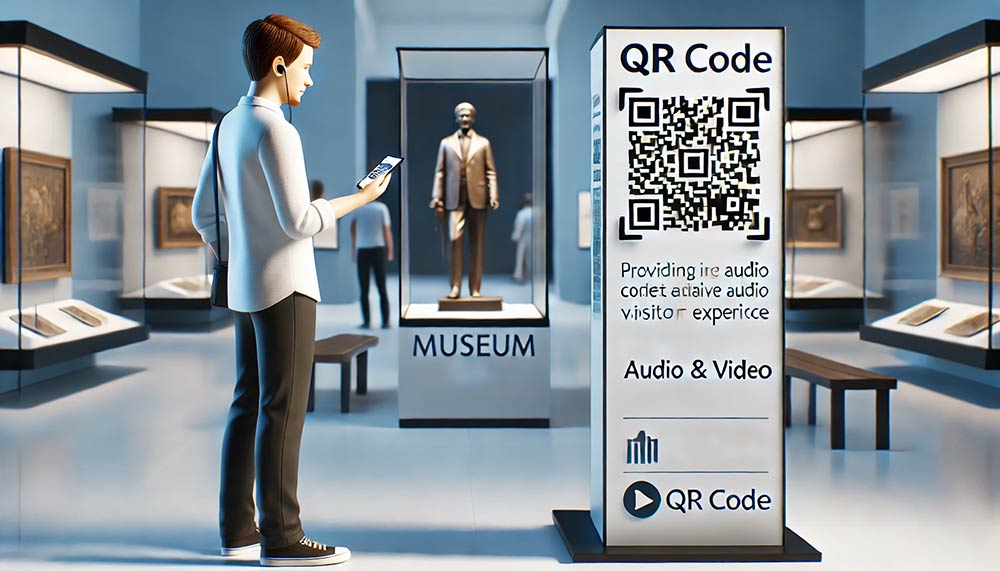 Museums exploring the use of AR QR codes need a dependable platform tailored to their specific needs. Pageloot offers a suite of tools to help museums create, manage, and refine QR codes, enabling more engaging storytelling experiences. With a reputation backed by over 20,000 brands, Pageloot ensures the reliability and features museums count on for their digital initiatives.
Museums exploring the use of AR QR codes need a dependable platform tailored to their specific needs. Pageloot offers a suite of tools to help museums create, manage, and refine QR codes, enabling more engaging storytelling experiences. With a reputation backed by over 20,000 brands, Pageloot ensures the reliability and features museums count on for their digital initiatives.
Designed with ease of use in mind, Pageloot empowers museum staff to leverage advanced QR code functionalities without requiring deep technical knowledge. These tools enable dynamic updates, provide real-time insights, and offer extensive customization options.
Dynamic QR Codes: Flexibility Without Reprinting
One of the challenges with traditional QR codes is the need to reprint them whenever content changes. Pageloot’s dynamic QR code generator eliminates this hassle by allowing museums to update the content linked to their QR codes without modifying the physical code.
This feature is especially useful for museums that regularly update exhibits or event details. Whether it’s changing a website URL, adding promotional offers, or updating contact information, museum teams can make adjustments quickly and efficiently through Pageloot’s platform.
The financial benefits are clear – dynamic QR codes help museums save on printing costs by removing the need for constant reprints. Additionally, museums can adapt their marketing campaigns in real time, updating event information, promotional materials, or exhibit details as needed. For AR experiences, this flexibility allows museums to continuously improve their storytelling content based on visitor feedback and evolving exhibit requirements.
Real-Time Analytics: Understanding Visitor Behavior
AR QR codes do more than just link to content – they also provide valuable data on visitor interactions. Pageloot’s real-time analytics offer museums detailed insights into QR code performance, including scan rates, locations, and engagement patterns. This data helps museums identify popular exhibits, monitor peak visitation times, and make informed decisions about content development and resource allocation.
The platform also supports the collection of visitor feedback through QR codes, giving museums a clearer picture of what their audience values and where improvements can be made. Metrics such as scan frequency and engagement duration can demonstrate the effectiveness of AR QR code initiatives to stakeholders, helping secure support for future projects.
Custom QR Codes: Aligning with Museum Branding
For museums, maintaining a cohesive visual identity is essential. Pageloot’s customization options allow institutions to design QR codes that reflect their aesthetic and branding. Museums can create QR codes with personalized colors, logos, and templates. These codes can link to a variety of content types, including videos, PDFs, images, or interactive AR experiences.
Custom-branded QR codes blend seamlessly into exhibit designs, enhancing the overall visual experience rather than detracting from it. Museums can also use print templates to integrate these codes into promotional materials, such as posters, exhibit labels, or flyers. This consistency strengthens the museum’s identity while organizing digital content in a way that’s both functional and visually appealing.
Conclusion
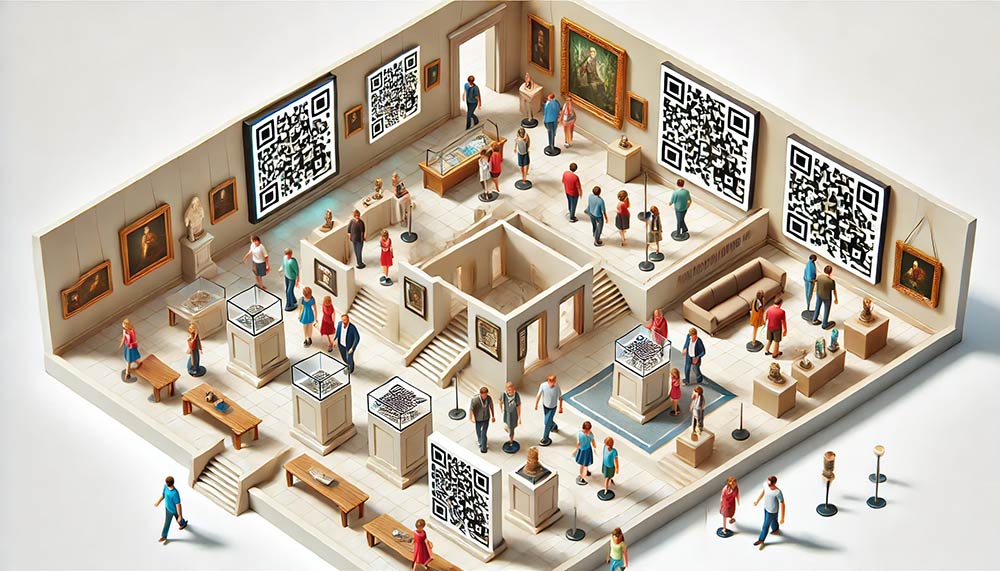 AR QR codes are changing the way we experience museums, turning traditional displays into dynamic, interactive journeys. By incorporating digital animations, audio elements, and 3D reconstructions into exhibits, these tools shift visitors from simply observing to actively engaging with the content. This transformation is already visible in museums around the globe.
AR QR codes are changing the way we experience museums, turning traditional displays into dynamic, interactive journeys. By incorporating digital animations, audio elements, and 3D reconstructions into exhibits, these tools shift visitors from simply observing to actively engaging with the content. This transformation is already visible in museums around the globe.
By delivering multimedia-rich narratives, museums cater to different learning styles, making intricate historical and cultural topics easier to grasp. Take the Latvian National Museum of Art, for example – visitors could scan QR codes to uncover hidden artworks and explore their backstories. Prestigious institutions like the British Museum and the Louvre have also seen an increase in visitor interaction and deeper exploration of exhibits.
From an operational standpoint, dynamic QR codes offer museums an edge. They allow for real-time updates to digital content without the need to reprint materials and provide the flexibility to adapt exhibits based on visitor feedback. Additionally, real-time analytics help museums understand which stories resonate most, enabling them to refine their approach continuously. This not only enhances the visitor experience but also opens up possibilities for more immersive and personalized storytelling in the future.
FAQs
How do AR QR codes make museum storytelling more engaging and interactive?
AR QR codes are changing the way museums share stories, connecting physical exhibits with interactive digital features like videos, audio guides, and 3D models. Instead of relying solely on static text or traditional displays, these codes let visitors explore exhibits in a whole new way – through augmented reality overlays and dynamic multimedia content. The result? A more engaging and unforgettable way to experience history, art, and culture.
By using AR QR codes, museums can provide real-time, personalized, and contactless access to information. With a simple scan, visitors can watch a historical moment unfold, examine a virtual reconstruction of an ancient artifact, or listen to expert insights – all from their smartphones. This modern approach not only enriches learning but also makes museum visits more interactive and accessible for everyone.
How are museums using AR QR codes to create engaging visitor experiences?
Museums are using AR QR codes to change the way visitors connect with exhibits, making the experience more interactive and educational. With just a quick scan, visitors can unlock digital guides, audio descriptions, and augmented reality features that add a whole new layer to their visit.
For example, some museums offer immersive audio tours through QR codes, sharing detailed stories about artifacts and artworks. Others use augmented reality to present virtual reconstructions of historical sites or 3D models of objects, helping visitors visualize the past in a dynamic way. These tools not only make exhibitions more engaging but also ensure that information is accessible to a wide range of visitors, enhancing the overall experience.
What are the main challenges museums face when using AR QR codes, and how can they address them?
Museums face several hurdles when incorporating AR QR codes into their exhibits. These challenges include striking the right balance between engaging visitors and avoiding sensory overload, ensuring accessibility for a wide range of visitors, and keeping QR codes intact in busy, high-traffic areas.
To tackle these obstacles, museums can design easy-to-use QR codes with simple, high-contrast visuals that are quick to scan. Including multi-language options and ensuring compatibility with assistive devices can make the experience more inclusive. Using dynamic QR codes is another smart move – they allow for easy content updates and help prevent outdated information. Durable materials are also crucial to keep the codes functional despite wear and tear in public spaces.
By focusing on smooth AR content delivery and conducting regular technical checks, museums can provide visitors with an engaging and accessible way to explore stories and exhibits.

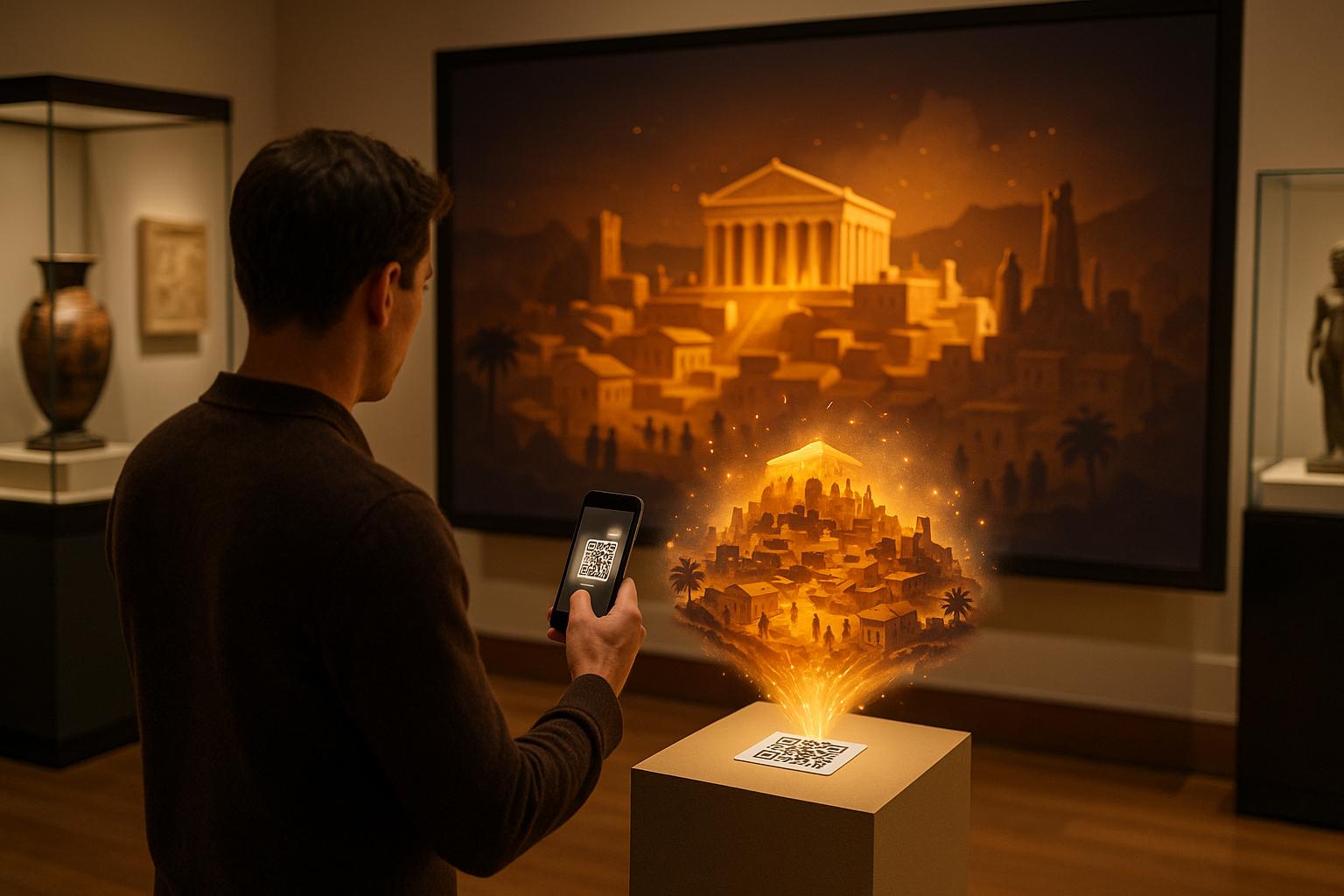
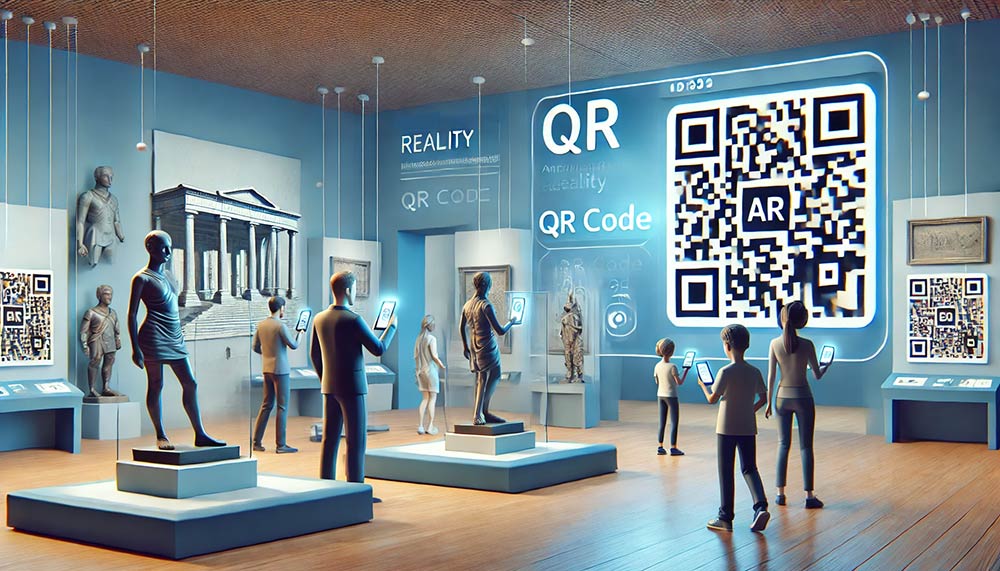 Turning Static Displays into Interactive Experiences
Turning Static Displays into Interactive Experiences
